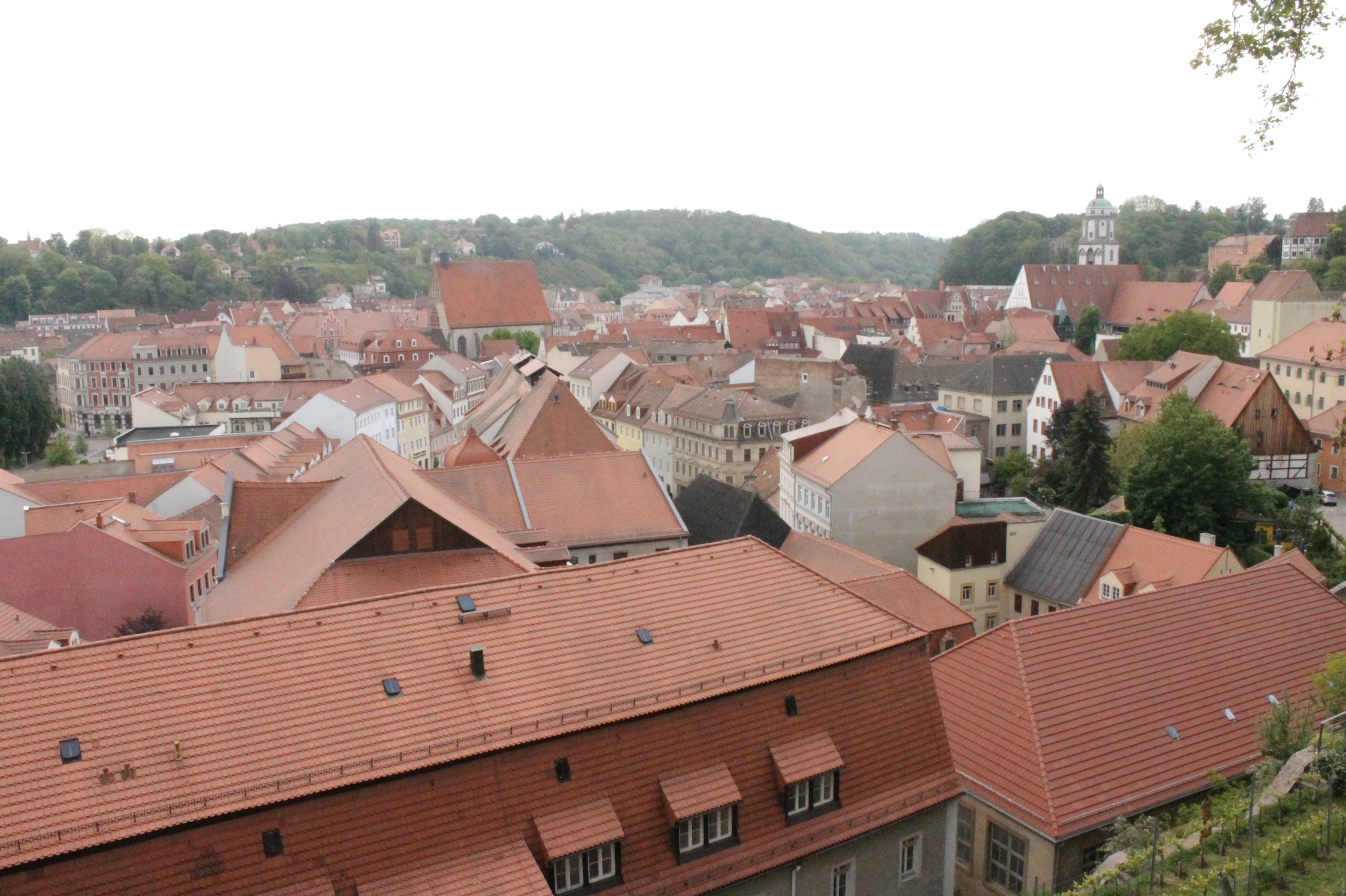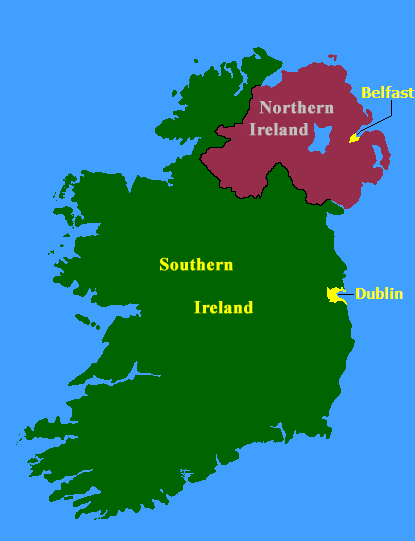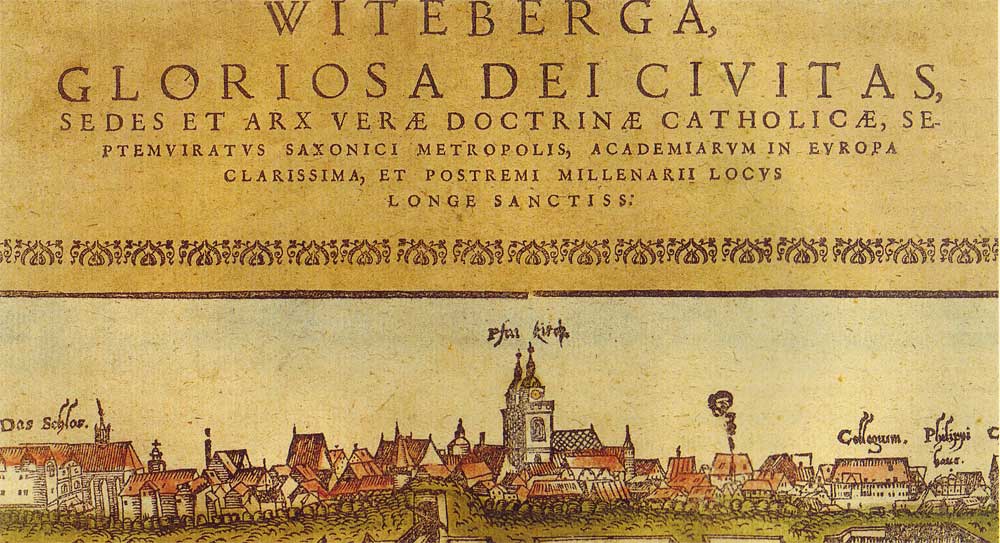|
Treaty Of Leipzig
The Treaty of Leipzig or Partition of Leipzig (German ''Leipziger Teilung'') was signed on 11 November 1485 between Elector Ernest of Saxony and his younger brother Albert III, the sons of Elector Frederick II of Saxony from the House of Wettin. The agreement perpetuated the division of the Wettin lands into a Saxon and a Thuringian part, which in the long run obstructed the further development of a Central German hegemonic power in favour of Brandenburg-Prussia. History In 1423 Ernest's and Albert's grandfather, Margrave Frederick IV of Meissen had received the Saxon Electorate from the hands of the Luxembourg emperor Sigismund. The Electorate — formerly the Duchy of Saxe-Wittenberg — together with the incorporated Margraviate of Meissen and the Thuringian landgraviate formed the united Wettin lands. After the death of Frederick in 1464, his lands were ruled jointly by his two sons, until 1485, when they were partitioned between them. In the 1485 partition the el ... [...More Info...] [...Related Items...] OR: [Wikipedia] [Google] [Baidu] |
Saxony (Division Of Leipzig) - DE
Saxony (german: Sachsen ; Upper Saxon: ''Saggsn''; hsb, Sakska), officially the Free State of Saxony (german: Freistaat Sachsen, links=no ; Upper Saxon: ''Freischdaad Saggsn''; hsb, Swobodny stat Sakska, links=no), is a landlocked state of Germany, bordering the states of Brandenburg, Saxony-Anhalt, Thuringia, Bavaria, as well as the countries of Poland and the Czech Republic. Its capital is Dresden, and its largest city is Leipzig. Saxony is the tenth largest of Germany's sixteen states, with an area of , and the sixth most populous, with more than 4 million inhabitants. The term Saxony has been in use for more than a millennium. It was used for the medieval Duchy of Saxony, the Electorate of Saxony of the Holy Roman Empire, the Kingdom of Saxony, and twice for a republic. The first Free State of Saxony was established in 1918 as a constituent state of the Weimar Republic. After World War II, it was under Soviet occupation before it became part of the communist East Germ ... [...More Info...] [...Related Items...] OR: [Wikipedia] [Google] [Baidu] |
Meissen
Meissen (in German orthography: ''Meißen'', ) is a town of approximately 30,000 about northwest of Dresden on both banks of the Elbe river in the Free State of Saxony, in eastern Germany. Meissen is the home of Meissen porcelain, the Albrechtsburg castle, the Gothic Meissen Cathedral and the Meissen Frauenkirche. The ''Große Kreisstadt'' is the capital of the Meissen district. Names * german: Meißen * french: Meissen, ou, selon l'orthographe allemande: ''Meißen''; en français suranné: ''Misnie'' * la, Misnia, Misena, Misnensium * pl, Miśnia * cs, Míšeň * hsb, Mišno * dsb, Mišnjo * zh, 迈森 (pinyin: ) History Meissen is sometimes known as the "cradle of Saxony". It grew out of the early West Slavic settlement of ''Misni'' inhabited by Glomatians and was founded as a German town by King Henry the Fowler in 929. In 968, the Diocese of Meissen was founded, and Meissen became the episcopal see of a bishop. The Catholic bishopric was suppressed in 1581 after ... [...More Info...] [...Related Items...] OR: [Wikipedia] [Google] [Baidu] |
Treaties Of The Electorate Of Saxony
A treaty is a formal, legally binding written agreement between actors in international law. It is usually made by and between sovereign states, but can include international organizations, individuals, business entities, and other legal persons. A treaty may also be known as an international agreement, protocol, covenant, convention, pact, or exchange of letters, among other terms. However, only documents that are legally binding on the parties are considered treaties under international law. Treaties vary on the basis of obligations (the extent to which states are bound to the rules), precision (the extent to which the rules are unambiguous), and delegation (the extent to which third parties have authority to interpret, apply and make rules). Treaties are among the earliest manifestations of international relations, with the first known example being a border agreement between the Sumerian city-states of Lagash and Umma around 3100 BC. International agreements were used in so ... [...More Info...] [...Related Items...] OR: [Wikipedia] [Google] [Baidu] |
Partition (politics)
In politics, a partition is a change of political borders cutting through at least one territory considered a homeland by some community.Brendan O'LearyDEBATING PARTITION: JUSTIFICATIONS AND CRITIQUES Arguments for *historicist – that partition is inevitable, or already in progress * last resort – that partition should be pursued to avoid the worst outcomes (genocide or large-scale ethnic expulsion), if all other means fail * cost–benefit – that partition offers a better prospect of conflict reduction than the if existing borders are not changed * better tomorrow – that partition will reduce current violence and conflict, and that the new more homogenized states will be more stable * rigorous end – heterogeneity leads to problems, hence homogeneous states should be the goal of any policy Arguments against * national territorial unity will be lost * bi-nationalism and multi-nationalism are not undesirable * the impossibility of a just partition * difficult in de ... [...More Info...] [...Related Items...] OR: [Wikipedia] [Google] [Baidu] |
1480s Treaties
*
{{Number disambiguation ...
148 may refer to: *148 (number), a natural number *AD 148, a year in the 2nd century AD *148 BC, a year in the 2nd century BC *148 (album), an album by C418 *148 (Meiktila) Battery Royal Artillery *148 (New Jersey bus) See also * List of highways numbered 148 The following highways are numbered 148: Argentina * National Route 148 (Argentina), National Route 148 Canada * New Brunswick Route 148 * Ontario Highway 148 * Prince Edward Island Route 148 * Quebec Route 148 Costa Rica * National Route 148 ( ... [...More Info...] [...Related Items...] OR: [Wikipedia] [Google] [Baidu] |
List Of Treaties
This list of treaties contains known agreements, pacts, peaces, and major contracts between states, armies, governments, and tribal groups. Before 1200 CE 1200–1299 1300–1399 1400–1499 1500–1599 1600–1699 1700–1799 1800–1899 1900–1999 2000-Present Pending * Central American Free Trade Agreement * Free Trade Area of the Americas * Substantive Patent Law Treaty (SPLT) * WIPO Protection of Broadcasting Organizations * Anti-Counterfeiting Trade Agreement The Anti-Counterfeiting Trade Agreement (ACTA) is a plurilateral agreement, multilateral treaty for the purpose of establishing international standards for intellectual property rights enforcement that did not enter into force. The agreement aims t ... Notes References External links Treaty of Peace with Japan Signed at San Francisco on 8 September 1951Treaty of Peace Between Japan and India (1952) Treaty of Peace Between Japan and the Union of Burma (1954) Agreement Between Japan and ... [...More Info...] [...Related Items...] OR: [Wikipedia] [Google] [Baidu] |
Saxony
Saxony (german: Sachsen ; Upper Saxon: ''Saggsn''; hsb, Sakska), officially the Free State of Saxony (german: Freistaat Sachsen, links=no ; Upper Saxon: ''Freischdaad Saggsn''; hsb, Swobodny stat Sakska, links=no), is a landlocked state of Germany, bordering the states of Brandenburg, Saxony-Anhalt, Thuringia, Bavaria, as well as the countries of Poland and the Czech Republic. Its capital is Dresden, and its largest city is Leipzig. Saxony is the tenth largest of Germany's sixteen states, with an area of , and the sixth most populous, with more than 4 million inhabitants. The term Saxony has been in use for more than a millennium. It was used for the medieval Duchy of Saxony, the Electorate of Saxony of the Holy Roman Empire, the Kingdom of Saxony, and twice for a republic. The first Free State of Saxony was established in 1918 as a constituent state of the Weimar Republic. After World War II, it was under Soviet occupation before it became part of the communist East Ger ... [...More Info...] [...Related Items...] OR: [Wikipedia] [Google] [Baidu] |
Ernestine Duchies
The Ernestine duchies (), also known as the Saxon duchies (, although the Albertine appanage duchies of Weissenfels, Merseburg and Zeitz were also "Saxon duchies" and adjacent to several Ernestine ones), were a group of small states whose number varied and which were largely located in the present-day German state of Thuringia and governed by dukes of the Ernestine line of the House of Wettin. Overview The Saxon duchy began fragmenting in the 15th century, as a result of the old German succession law that divided inheritances among all sons. In addition, every son of a Saxon duke inherited the title of duke. Brothers sometimes ruled the territory inherited from their father jointly, but sometimes they split it up. Some of the Ernestine duchies retained their separate existence until 1918. Similar events in the houses of Reuss and Schwarzburg led to all of Thuringia becoming a tangle of small states from the late 15th century until the early 20th century. Before the Ernestine ... [...More Info...] [...Related Items...] OR: [Wikipedia] [Google] [Baidu] |
Kingdom Of Saxony
The Kingdom of Saxony (german: Königreich Sachsen), lasting from 1806 to 1918, was an independent member of a number of historical confederacies in Napoleonic through post-Napoleonic Germany. The kingdom was formed from the Electorate of Saxony. From 1871, it was part of the German Empire. It became a free state in the era of Weimar Republic in 1918 after the end of World War I and the abdication of King Frederick Augustus III of Saxony. Its capital was the city of Dresden, and its modern successor state is the Free State of Saxony. History Napoleonic era and the German Confederation Before 1806, Saxony was part of the Holy Roman Empire, a thousand-year-old entity that had become highly decentralised over the centuries. The rulers of the Electorate of Saxony of the House of Wettin had held the title of elector for several centuries. When the Holy Roman Empire was dissolved in August 1806 following the defeat of Emperor Francis II by Napoleon at the Battle of Austerlitz, th ... [...More Info...] [...Related Items...] OR: [Wikipedia] [Google] [Baidu] |
Capitulation Of Wittenberg
{{Campaignbox Schmalkaldic War The Capitulation of Wittenberg (german: Wittenberger Kapitulation) was a treaty on 19 May 1547 by which John Frederick I, Elector of Saxony, was compelled to resign the title of elector. The Electorate of Saxony and most of his territory, including Wittenberg, passed from the elder Ernestine line to the cadet Albertine line of the House of Wettin. Wittenberg had become the focus of the Protestant Reformation. In 1517, Martin Luther had nailed his 95 Theses against Indulgences on the door of the castle church at Wittenberg, the opening act of the Reformation. In 1520 he burned the papal bull condemning him, and in 1534 the first Lutheran Bible was printed there. The Elector of Saxony was the most important patron of the Lutheran Reformation. In 1547, Emperor Charles V, with the assistance of the Duke of Alva, captured Wittenberg after the Battle of Mühlberg, where John Frederick I was taken prisoner. The Duke of Alva then presided over a court ... [...More Info...] [...Related Items...] OR: [Wikipedia] [Google] [Baidu] |
John Frederick I, Elector Of Saxony
John Frederick I (30 June 1503 in Torgau – 3 March 1554 in Weimar), called the Magnanimous, was the Elector of Saxony (1532–1547) and head of the Schmalkaldic League. Early years John Frederick was the eldest son of Elector John by his first wife, Sophie of Mecklenburg-Schwerin. His mother died fourteen days after his birth, on 12 July 1503. John Frederick received his education from George Spalatin, whom he highly esteemed during his whole life. Spalatin was Martin Luther's friend and advisor and thus, through Spalatin's schooling, John Frederick developed a devotion to the teachings of Martin Luther. His knowledge of history was comprehensive, and his library, which extended over all sciences, was one of the largest in Germany. He cultivated a personal relationship with Martin Luther, beginning to correspond with him in the days when the bull of excommunication was first issued against the Reformer, and showing himself a convinced adherent of Luther. He carefully observe ... [...More Info...] [...Related Items...] OR: [Wikipedia] [Google] [Baidu] |
Maurice, Elector Of Saxony
Maurice (21 March 1521 – 9 July 1553) was Duke (1541–47) and later Elector (1547–53) of Saxony. His clever manipulation of alliances and disputes gained the Albertine branch of the Wettin dynasty extensive lands and the electoral dignity. 1521–1541: Infancy and youth Maurice was the fourth child but first son of the future Henry IV, Duke of Saxony, then a Catholic, and his Protestant wife, Catherine of Mecklenburg-Schwerin. Henry was the younger brother of George, Duke of Saxony. In December 1532, Maurice, aged 11, came to live at the castle of his godfather, Cardinal Albert of Brandenburg, Archbishop of Magdeburg and Mainz. For two years, he lived a contemplative life until his uncle Duke George demanded his return to Saxony. George began the training of the future Duke and educated him as a Catholic. But in 1536 Maurice's father became a Protestant, and when he succeeded George as Duke in 1539, he made the Duchy Protestant. Henry and Catherine took the education of t ... [...More Info...] [...Related Items...] OR: [Wikipedia] [Google] [Baidu] |
_-_DE.png)






